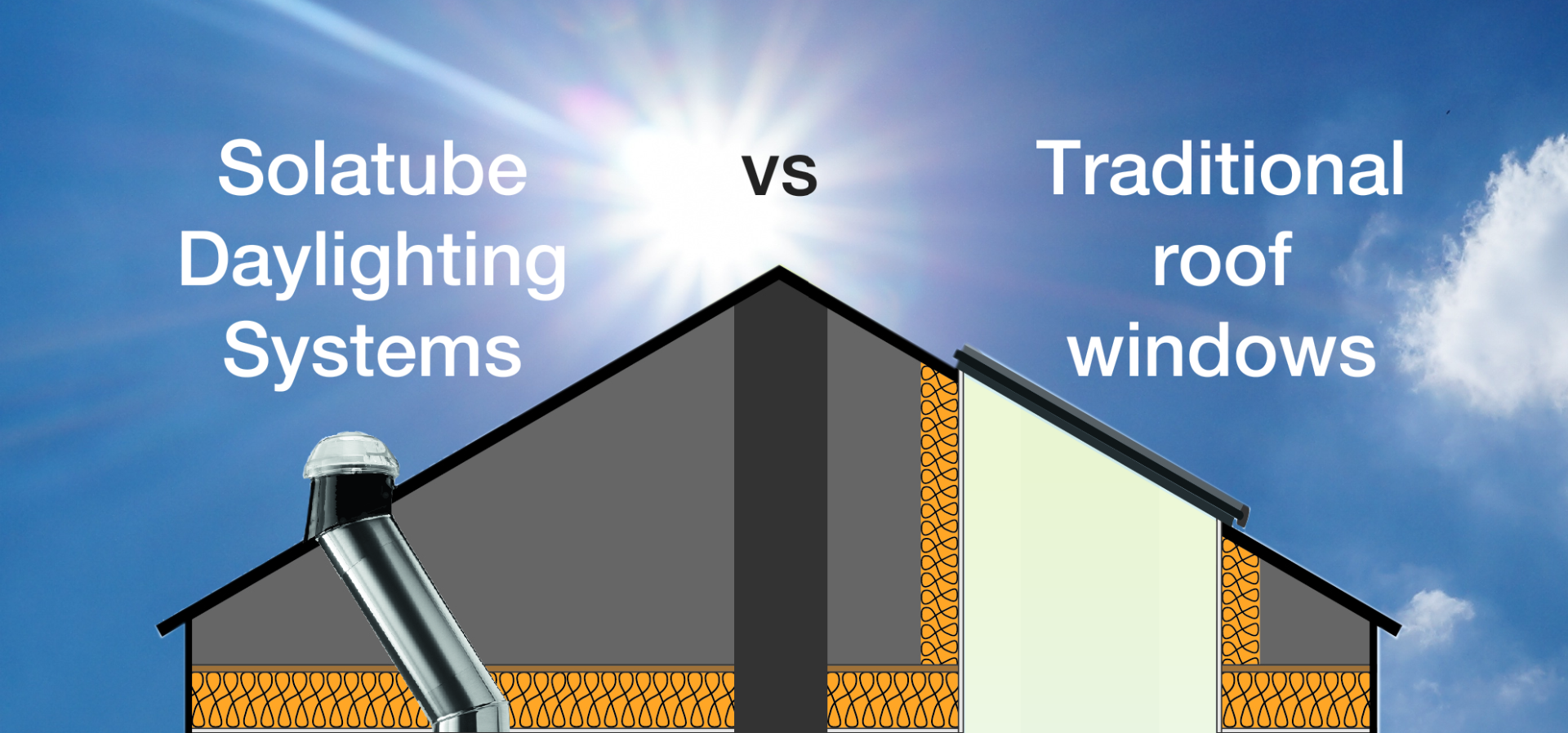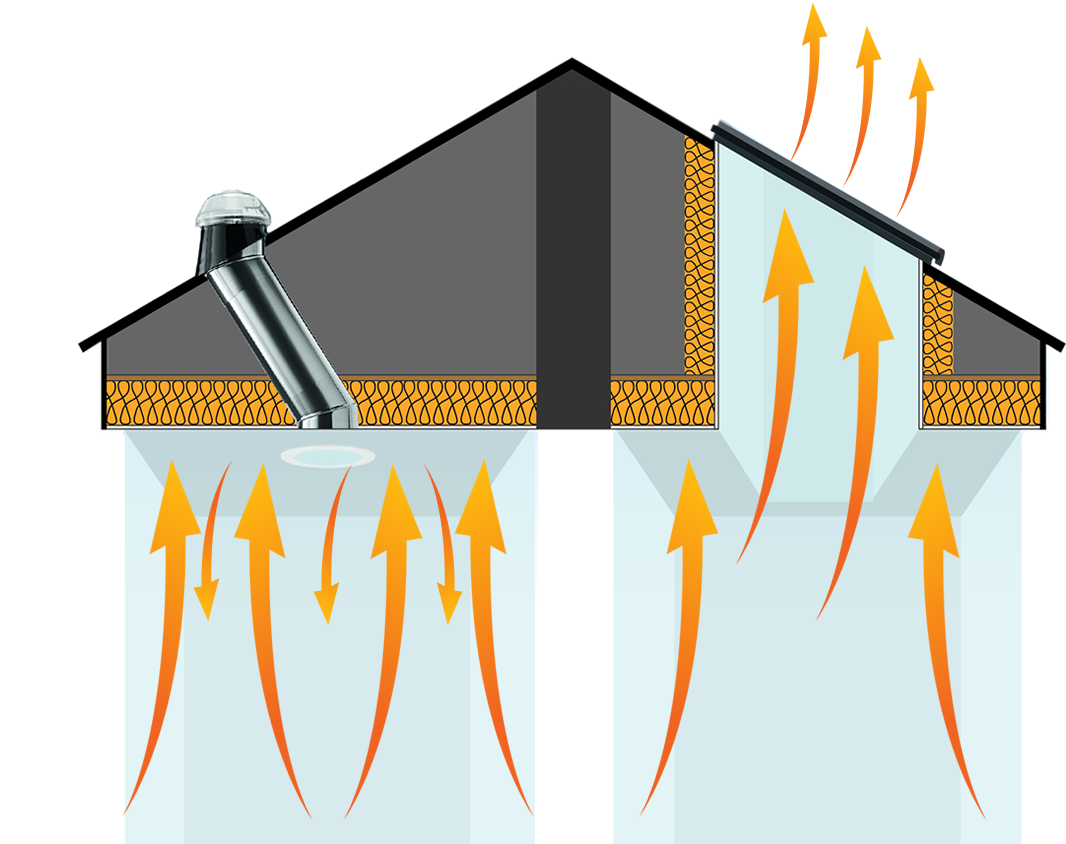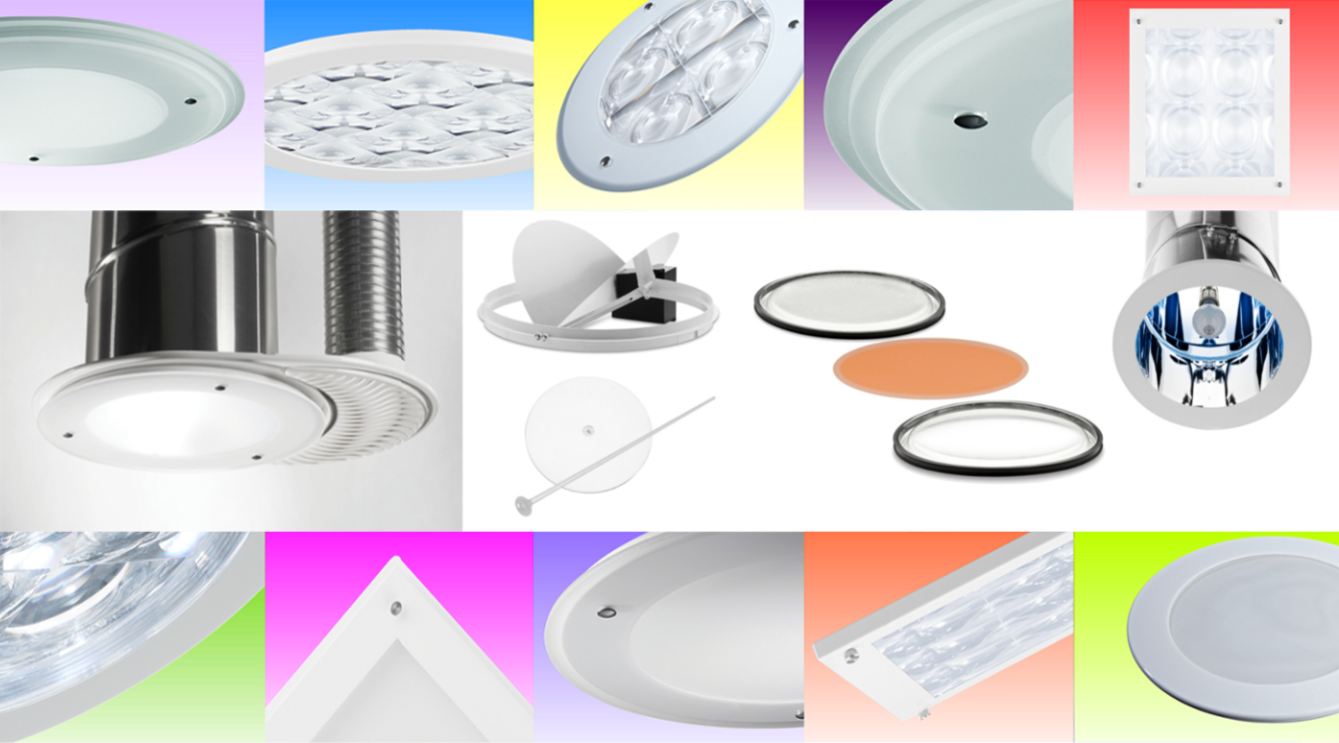Blogs, News & Events...

Solatube Daylighting Systems vs Traditional Roof Windows
Most homeowners are familiar with traditional skylights - large, rectangular windows set into the roof to let sunlight in. While such roof windows have their place — the primary benefits being that you can open them and (sometimes) see out of them — there are many advantages to using a Solatube Tubular Daylighting System; it is simply a question of using the right product to do the best job. If a view is not to be gained, then a tubular daylighting system is a very strong contender as it has many advantages over traditional roof windows.
Installation
Where you have a conventional ceiling with roof space above, you will find that traditional inset roof windows are considerably more expensive to install than tubular daylighting systems because they require multiple trades; restructuring is required (usually roof battens or joists need to be cut), then drywalling to the side walls and finally 'making good' with fillers, plastering, and painting. None of this is required with tubular daylighting systems; they are designed to fit between standard roof joists and there is no 'making good' required, so installation is quicker, tidier and more cost-effective.
Thermal Insulation
The thermal efficiency of a traditional roof window is poor compared to that of a tubular daylighting system; in winter, heat will escape through the large aperture in your ceiling, whereas in summer you are likely to suffer from solar gain (heat build-up).
Solatube Daylighting Systems have excellent insulation properties with u-values of just 1.3 W/m²K — better than many double-glazed windows.* Furthermore, they are double-glazed at ceiling level (not roof level) to prevent your expensive heated (or cooled) air escaping from the room below into the roof void.
A further benefit is their acoustic insulation; rain falling onto traditional roof windows can be very noisy, yet is almost undiscernable with tubular daylighting systems. And If security is a consideration, then our daylighting systems are a far safer bet than a traditional roof window as our polycarbonate dome material is considerably stronger than glass — and many times stronger than acrylic!
* The award-winning Energy Care Optima™ add-on enhancement is available to provide even greater thermal efficiency for your Solatube Daylighting System, with u-values as low as 0.5 W/m²K — that’s passive house standard!

Light Delivery
Solatube Daylighting Systems deliver significant amounts of light for their size, delivering the same (often more) daylight as traditional roof windows, but through a far smaller aperture. They are also efficient on all roof aspects, whereas traditional roof windows are efficient only on south-facing aspects. Fresnel lenses in the roof dome also means the system makes the most of low level sun – during winter and early morning/evening.
Another consideration is that traditional roof windows with their light wells create a shaft of light, whereas the daylight from a tubular daylighting system is evenly spread throughout the room thanks to the ceiling diffuser. UV rays are virtually eliminated from the daylight delivered via a tubular daylighting system, so your carpets and soft furnishings are not harmed.

Accessories
While roof windows are typically a stand-alone feature, our daylighting systems come with a wide range of fully integrated accessories – including a bathroom ventilation kit and electric lighting, giving you the option of a neat, multi-functional unit in one system.

Maintenance
Condensation is likely to be an issue with traditional roof lights, whereas Solatube tubular daylighting systems are designed to dissipate any condensation that may form out on to the roof. Light wells are also a haven for cobwebs, flies and spiders and will require frequent cleaning. Tubular daylighting systems, on the other hand, require no cleaning or maintenance.



